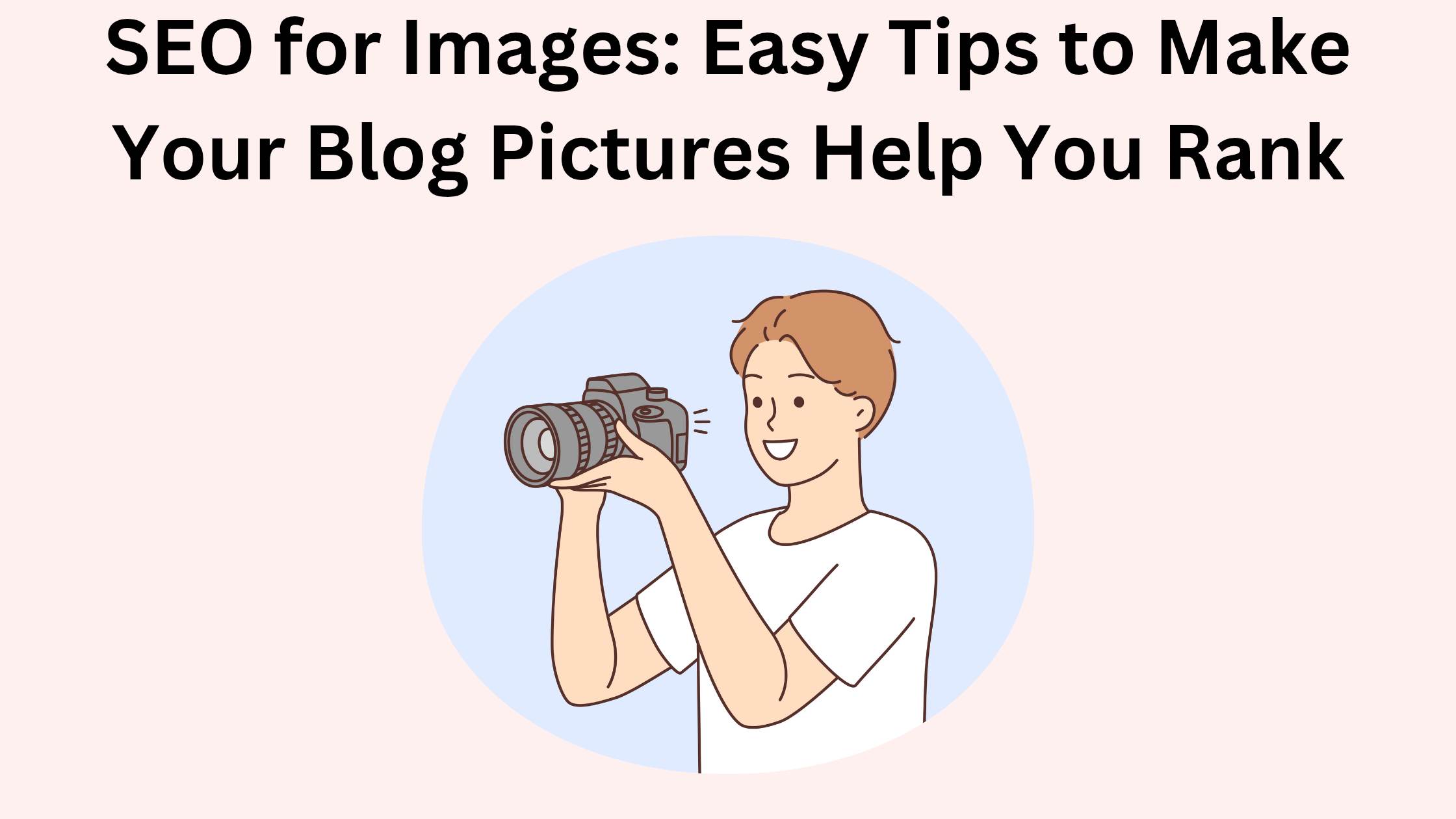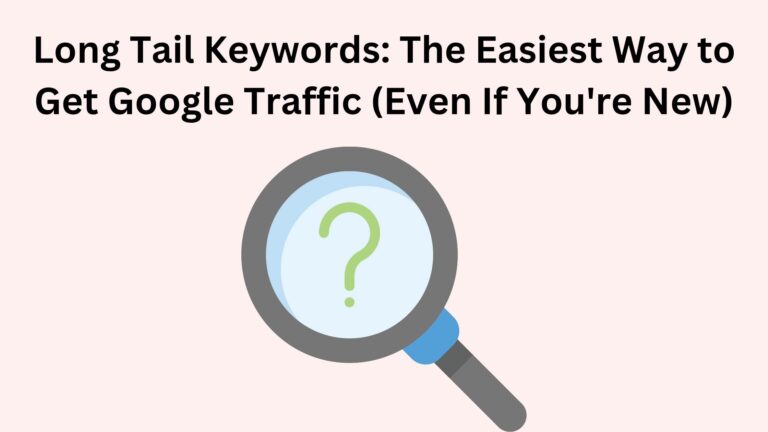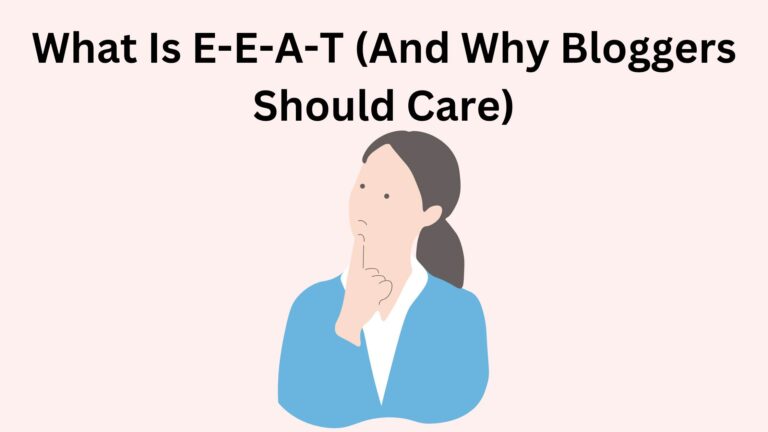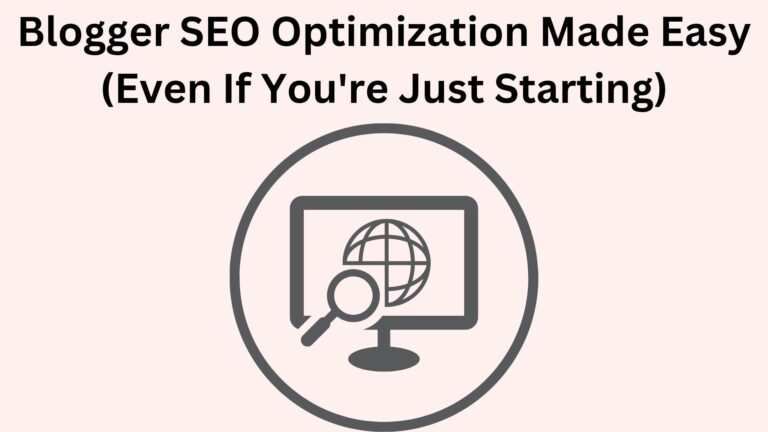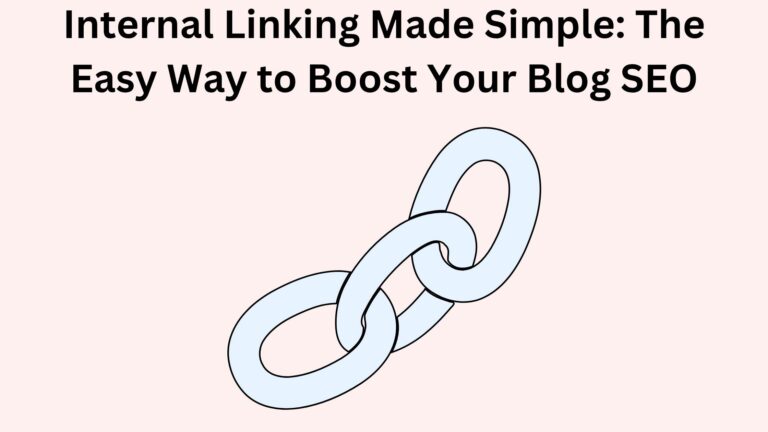SEO for Images: Easy Tips to Make Your Blog Pictures Help You Rank
Let me ask you something:
Have you ever uploaded a picture to your blog and just… moved on?
No renaming it. No resizing it. No thinking about how it affects Google.
If yes, you’re not alone — most new bloggers do this.
But here’s the truth:
Your images can actually help your blog rank better on Google — if you know how to optimize them.
And don’t worry, it’s not hard.
In this post, I’ll walk you through everything you need to know about SEO for images, step by step.
No tech jargon. No confusing stuff.
Let’s make your pictures work smarter for your blog.
What Is SEO for Images?
SEO for images is simply the way you prepare and add images to your blog so that:
- Google understands what your images show
- You show up in Google Image Search
- Your posts rank better overall
In short: it’s how you help Google and your readers at the same time.
Why Image SEO Is a Big Deal
You might think, “I’m focusing on text and keywords… do images even matter?”
Yes — more than you think.
Here’s why:
- Images that are too big can slow down your blog
- Google can’t “see” your image unless you describe it
- Good image SEO makes your blog look more professional
- It can bring you traffic from Google Image Search
So every time you add a photo or graphic, you have a chance to help your SEO — or hurt it.
How to Do Image SEO (In Simple Steps)
1. Rename the Image File
Before uploading, change the file name to something that tells Google what it is.
Bad: IMG_4728.jpg
Good: blogging-tools-setup.jpg
Use real words, lowercase, and hyphens between them.
2. Resize and Compress the Image
Uploading large images slows down your blog.
That’s bad for SEO and user experience.
Before uploading, use free tools like:
These tools shrink the image file size without making it look ugly.
3. Write a Clear Alt Text
Alt text is a short line that describes your image.
Google uses this to understand what the picture shows.
Good alt text:
“Person typing on a laptop for a blog”
Bad alt text:
“Image123” or “seo pic”
Keep it short and real.
If it makes sense, include a keyword, but don’t force it.
4. Use the Right Format
- Use PNG for graphics or logos
- Use WebP for best speed (if your platform supports it)
Tip: Avoid old heavy formats like BMP or TIFF.
5. Check How It Looks on Mobile
A lot of bloggers forget this — but most readers are on their phones.
So always preview your blog post on mobile.
Make sure your images:
6. Turn On Lazy Loading
This simply means that images load only when the reader scrolls down to them.
It makes your blog load faster overall.
If you’re using Blogger, you can add lazy loading with a simple script.
If you’re on WordPress, most themes or plugins have it built-in.
7. Use Your Own Images or Royalty-Free Ones
Don’t take pictures from Google.
That’s not just bad for SEO — it’s risky.
Instead, use:
Or even better — take your own photos.
Want Your Images to Show Up in Google Search?
When you do image SEO right, your pictures can appear in Google Image Search, bringing in extra traffic.
Imagine this:
Someone types “best blogging tools,” sees your image, clicks it, and lands on your post.
That’s free traffic — just from one image.
Quick Do’s and Don’ts for Image SEO
✅ Do:
Rename your images before uploading
❌ Don’t:
- Upload huge files straight from your phone
- Use random or default file names
- Stuff keywords in the alt text
Wrap Up: Image SEO Made Simple
You don’t need to be an expert or a designer to do SEO for images.
Just follow these simple steps every time you add a photo to your blog.
It’ll make your site faster, more professional — and yes, help your posts rank better.
Small changes = big results over time.
So next time you upload an image, remember:
You’re not just adding a picture… you’re building your SEO.
Would you like help checking if your blog images are optimized?
Let me know — I can help you review one of your posts and give quick tips.
